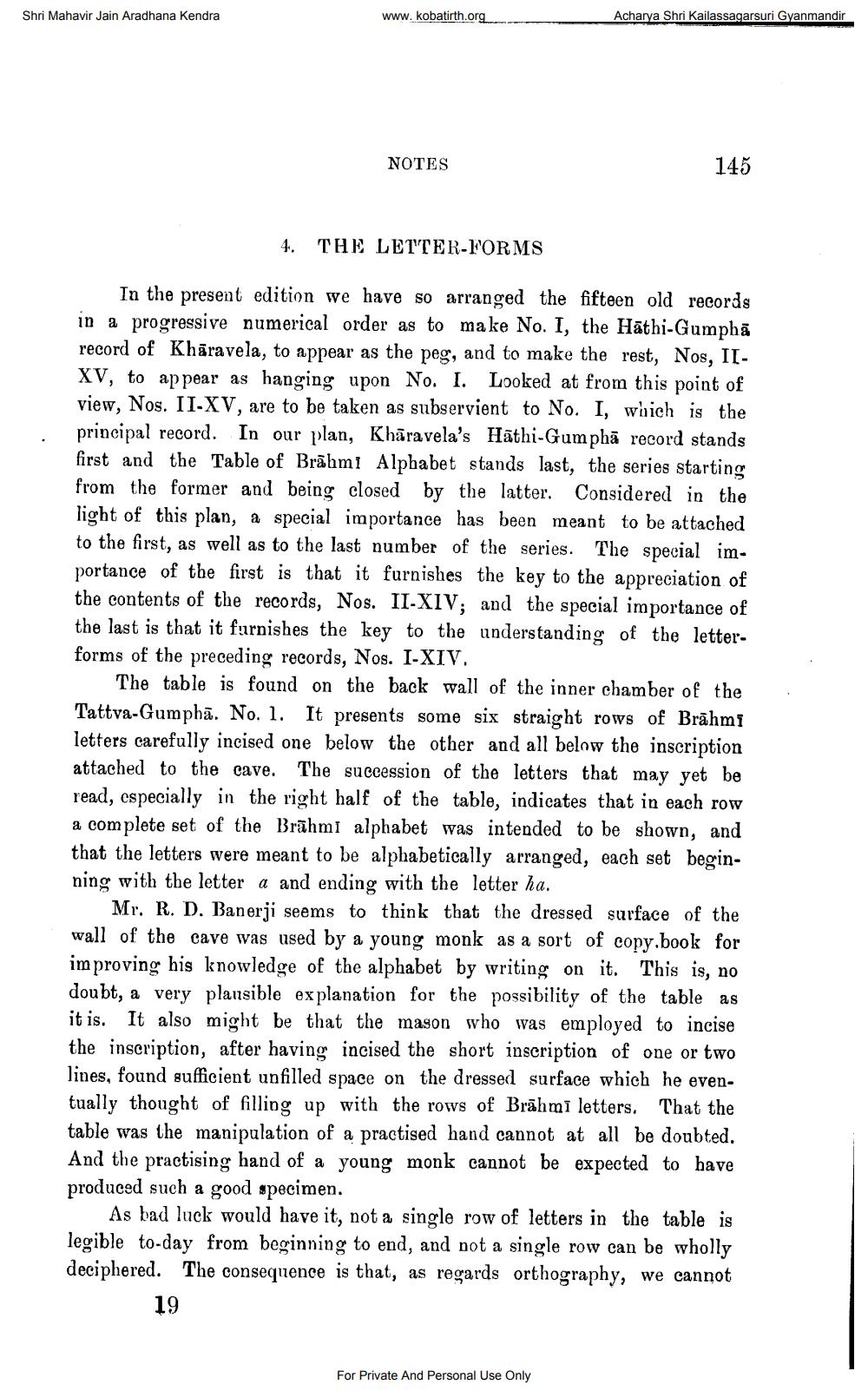________________
Shri Mahavir Jain Aradhana Kendra
www.kobatirth.org
NOTES
Acharya Shri Kailassagarsuri Gyanmandir
145
4. THE LETTER-FORMS
In the present edition we have so arranged the fifteen old records in a progressive numerical order as to make No. I, the Hathi-Gumpha record of Kharavela, to appear as the peg, and to make the rest, Nos, IIXV, to appear as hanging upon No. I. Looked at from this point of view, Nos. II-XV, are to be taken as subservient to No. I, which is the principal record. In our plan, Kharavela's Hathi-Gumpha record stands first and the Table of Brahmi Alphabet stands last, the series starting from the former and being closed by the latter. Considered in the light of this plan, a special importance has been meant to be attached to the first, as well as to the last number of the series. The special importance of the first is that it furnishes the key to the appreciation of the contents of the records, Nos. II-XIV; and the special importance of the last is that it furnishes the key to the understanding of the letterforms of the preceding records, Nos. I-XIV.
The table is found on the back wall of the inner chamber of the Tattva-Gumphã. No. 1. It presents some six straight rows of Brahmi letters carefully incised one below the other and all below the inscription attached to the cave. The succession of the letters that may yet be read, especially in the right half of the table, indicates that in each row a complete set of the Brahmi alphabet was intended to be shown, and that the letters were meant to be alphabetically arranged, each set beginning with the letter a and ending with the letter ha.
For Private And Personal Use Only
Mr. R. D. Banerji seems to think that the dressed surface of the wall of the cave was used by a young monk as a sort of copy.book for improving his knowledge of the alphabet by writing on it. This is, no doubt, a very plausible explanation for the possibility of the table as it is. It also might be that the mason who was employed to incise the inscription, after having incised the short inscription of one or two lines, found sufficient unfilled space on the dressed surface which he eventually thought of filling up with the rows of Brahmi letters. That the table was the manipulation of a practised hand cannot at all be doubted. And the practising hand of a young monk cannot be expected to have produced such a good specimen.
As bad luck would have it, not a single row of letters in the table is legible to-day from beginning to end, and not a single row can be wholly deciphered. The consequence is that, as regards orthography, we cannot
19




